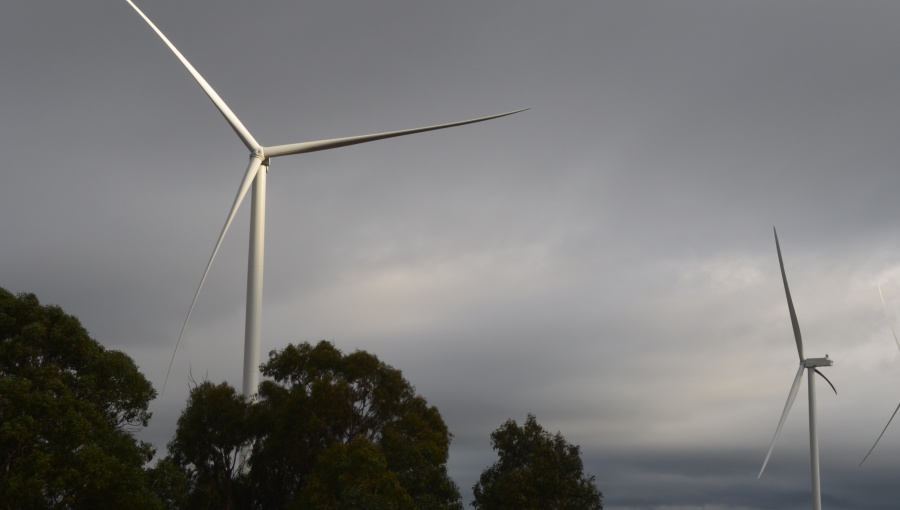REM: GE’s new energy company will face a tough market as renewable energy booms

When General Electric Co. spins off its power business in 2024, the US conglomerate’s renewable energy business will attract investment because of its reputation – but it will also face a cutthroat market from European and Chinese competitors.
The GE renewable energy unit, which primarily makes on- and offshore wind turbines, has not achieved an annual profit since 2018. It also services its wind turbines and sells and maintains grid solutions, including software.
GE recently announced that it will combine GE Renewable Energy, GE Power and GE Digital and spin off the stand-alone energy business in early 2024. The entire conglomerate is in fact breaking up into three businesses: energy, healthcare and aviation.
Scott Strazik, currently CE of GE Power, will be the CEO of the new combined renewable energy, power and digital business.
The conglomerate Siemens, a rival to GE, spun off its power division last year and created Siemens Energy, although it had merged its wind business with Gamesa in 2017. Siemens Energy owns 67% of Siemens Gamesa.
The new GE energy company will be positioned to “lead the energy transition”, said Boston-based GE in a press release. "Customers need GE at its best and at its most focused to help them navigate the energy transition," chief executive officer Larry Culp explained to Reuters in an interview just after the announcement was made.
The break-up news is important for renewable energy. In 2020, GE was the world’s second largest manufacturer of wind turbines, according to the Global Wind Energy Council. Last year, GE had installations of 14,135 MW of wind turbines. Significantly, its ranking was up two places from 2019.
In first place for 2020 for turbine installations was Denmark-based Vestas, while China’s Goldwind and Envision were third and fourth respectively. The German-Spanish company Siemens Gamesa was in fifth place.
GE’s renewable energy business has been making a loss, most recently due in part to supply chain pressures, rising costs for materials for components such as steel and resin, as well as negative margins for its fast-growing offshore wind business, and fewer grid equipment and software sales.
Its primary wind turbine market is the US, its home market, where GE’s onshore wind turbine sales have recently been dented by the expiration of the federal wind production tax credit (PTC).
The tax credit could be extended – and indeed improved – by the Biden-backed Build Back Better legislation currently being debated in Congress. Because of the prospects of more government help in the future, US wind project investment decisions are being delayed.
"There's a lot of progress being made in the businesses. Unfortunately, the effect of the PTC really does camouflage that nearer-term performance," Culp told Bloomberg.
Culp also predicted that the conglomerate’s wind turbine business may still not be profitable in 2022.
“We’re fighting like hell to get to break-even next year,” he told Bloomberg. “But I think that that’s a lower probability outcome today than I thought it would be at the beginning of this year.” Earlier in 2021 GE had forecast that GE Renewable Energy would achieve positive profit margins in 2022, noted Bloomberg.
GE, in its third-quarter 2021 earnings, reported that its renewable energy division had lost $151mn in the quarter, compared with a $51mn loss in the same quarter a year earlier, but it also reported that renewable energy orders had increased by 65% to $6.5bn year on year, much of it offshore wind equipment.
Its Q3 2021 revenues fell by 7% y/y to $4.21bn, missing analysts’ expectations of $4.66bn.
Yet a new GE energy company could be attractive to investors. "Investors will welcome a known franchise," said Dan Pickering, chief investment officer of financial services firm Pickering Energy Partners, in an interview with Reuters. The GE energy unit's large size and standing will make the spinoff "a meaningful and credible player in the business," he continued.
Or as Colin Scarola, equity analyst at investment company CFRA Research, also told the news service: the power business spinoff could lead to "value creation" for the conglomerate’s businesses that "in aggregate have been shrinking and losing money both before and since the pandemic."
But the fact that GE’s new energy business will also sell equipment for coal – which GE calls “steam” – as well as gas, hydro and nuclear power will be an issue for some investors. Investors are currently fleeing coal at an unprecedented rate. Rival wind turbine competitors such as Vestas and Siemens Gamesa do not have such baggage, while Chinese firms Goldwind and Envision get substantial support from the Beijing government.
“Globally, competition is definitely increasing, it’s a fight,” said Shashi Barla, principal analyst for global wind supply chain and technology at Wood Mackenzie, told the Wall Street Journal of the marketplace that the GE energy company will enter. The top five players in wind turbines will corner 75% of the global market by 2030, he said.
GE is in a strong position in the wind market, however, with steady onshore sales – its wind turbine rivals are similarly facing headwinds such as supply chain issues and higher commodity prices – and it has secured a couple of major wins in the offshore market.
GE will supply the 800-MW Vineyard 1 wind project off Massachusetts – the US’s first large-scale offshore wind project – as well as the 3,600-MW Dogger Bank wind farm off the UK in the North Sea.


Follow us online